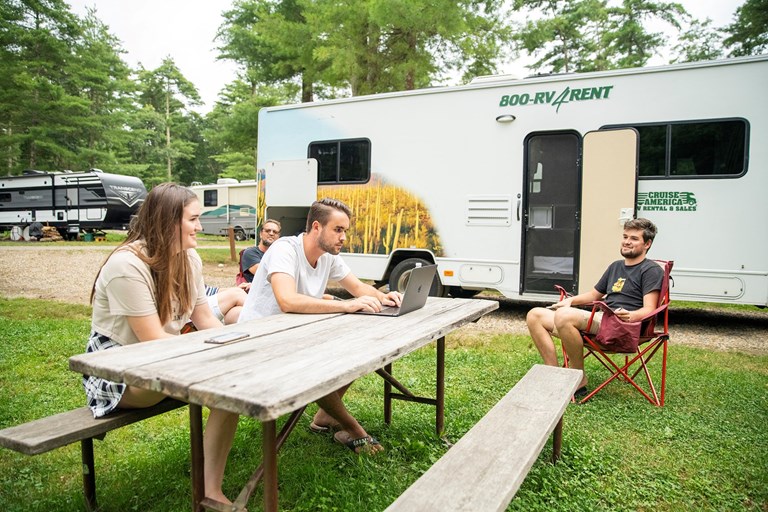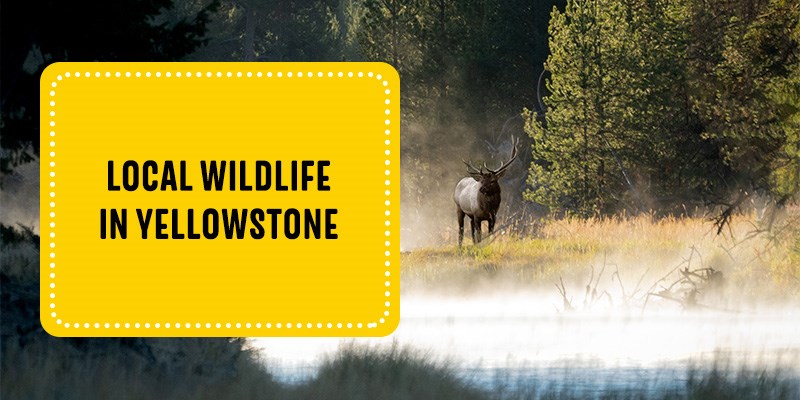Your cart is empty!
Make checkout easy by booking all your reservations at once. Add your sites from different campgrounds into your shopping cart* and then choose checkout.


Yellowstone is America's first national park and a paradise for nature and wildlife lovers. With over 300 species of birds, 16 fish species, five different kinds of amphibians, six reptile species and more than 67 species of mammals, it may feel like there is a new type of wildlife at every turn. Here are some of the many different animals you may experience during your Yellowstone trip.
Yellowstone National Park contains the largest concentration of mammals in the continental United States. The population is also very diverse — the park is home to some of the smallest mammals, like the pika, as well as larger mammals, like buffalo. Some of the mammals you may see on your visit include:
All carnivores originally ate meat exclusively. However, many have evolved to become omnivores, in which they eat both plants and animals. Over a dozen carnivores are present in the park, including:
An ungulate is a hooved herbivore and can be even or odd-toed. All of the ungulates in the park are even-toed and include species like:
Rodents are an essential part of the greater Yellowstone ecosystem, and many different species call the park home, such as:
These small mammals are similar to rodents, except they only eat plants. You may find the following in the park:
Bats are the only mammals that can fly, and Yellowstone has over 13 different kinds. A few of the 13 species that call the park home include:
Yellowstone's variation in elevation causes many different types of habitats to form, leading to a wide variety of birds. While there are over 300 species, some of the most common are:
Birds of prey are birds that typically feed on smaller rodents and animals. Some birds of prey you may see as you make your way through the park are:
Almost half of the birds living in Yellowstone depend on the wetlands for survival. Some of these bird species include:
Songbirds are some of the most common species in Yellowstone, and some songbirds you may see include:
Even before Yellowstone was a national park, it was a popular fishing spot for native populations. Fishing is still one of the most popular forms of visitor recreation, and there are many different species of native fish you may catch, with the most popular being:
Amphibians play an essential role in Yellowstone's aquatic and terrestrial ecosystems. Since amphibians are sensitive to disease, pollution and drought, they offer valuable insight into the overall health of an ecosystem and the effects of environmental change. Some of the amphibians you may see as you enjoy the park include:
Yellowstone is a great place to study the habits of reptiles, and some of the many reptiles present in the park are:
Before coming to Yellowstone, you may want to research the habitat and migration patterns of the animals you wish to see. For example, ospreys primarily eat fish, so you may want to look for them along rivers. You will also want to consider hydrothermal basins when looking for wildlife. A few members of the bison population live in the Old Faithful area throughout the year, as the ground is warm with limited snow cover in the winter, so they can easily access food.
If you are looking for a comfortable place to stay on your way to Yellowstone National Park, Kampgrounds of America offers multiple locations less than 50 miles from the park. If you plan to enter Yellowstone from the North Entrance, stop for a night to take a hike, fish the Yellowstone River or relax in a riverside Deluxe Cabin at Livingston/Paradise Valley KOA Holiday. You will experience comfortable campsites as well as access to amenities such as showers and bathrooms with hot water and recreational activities.
Adventure is calling when you book your stay at KOA. Explore campgrounds in Wyoming, Montana and Idaho to start planning an action-packed vacation that lets you make the most out of the beautiful natural scenery surrounding you. Use the campground locator to find a campsite today!
That doesn't mean this area has to always be empty. When you start reviewing camping options, your history will display here to help compare sites and find the best stay. You will be able to share your stay information with friends or family and save it for a later time if you have a KOA Account.
Make checkout easy by booking all your reservations at once. Add your sites from different campgrounds into your shopping cart* and then choose checkout.